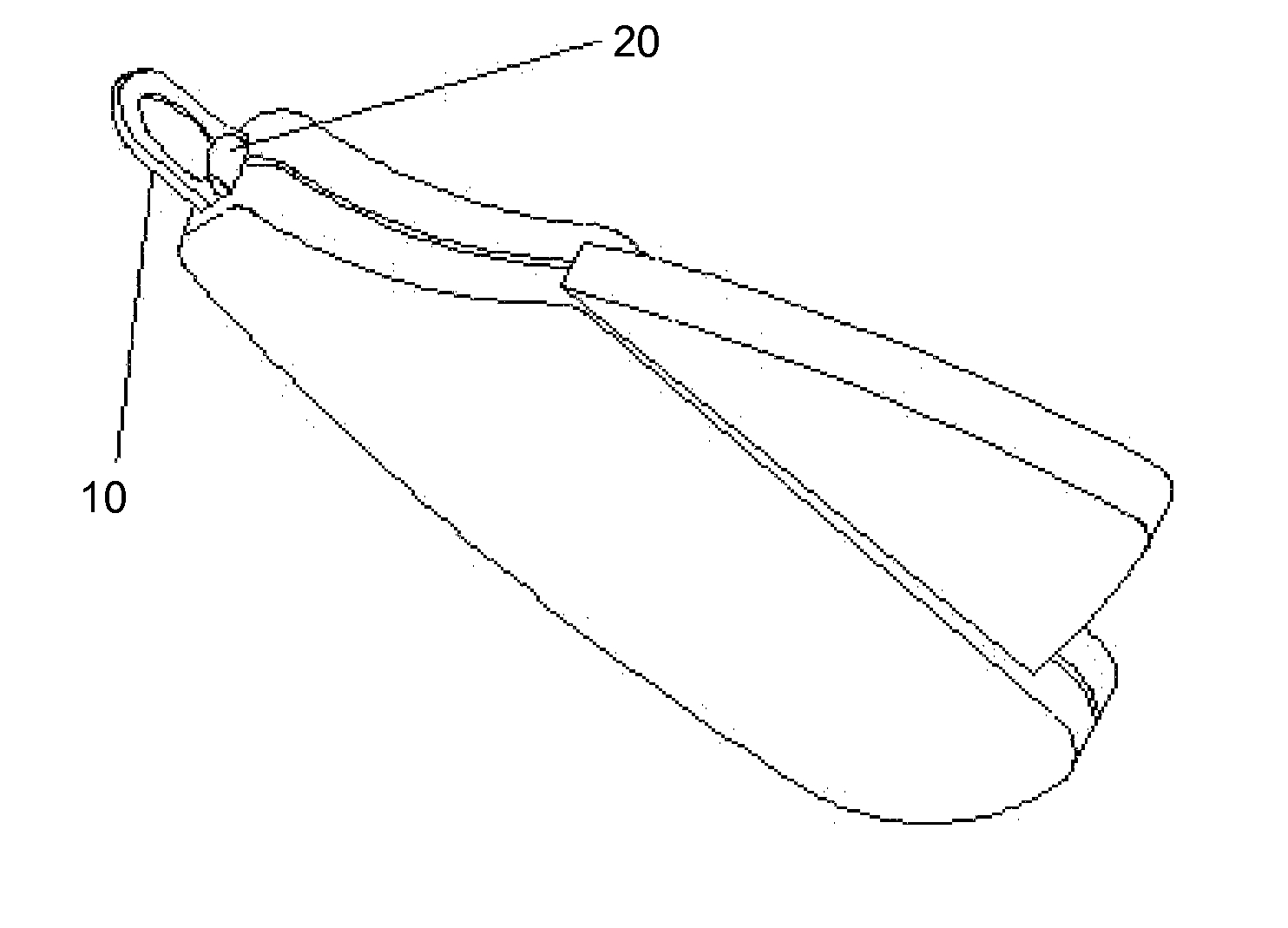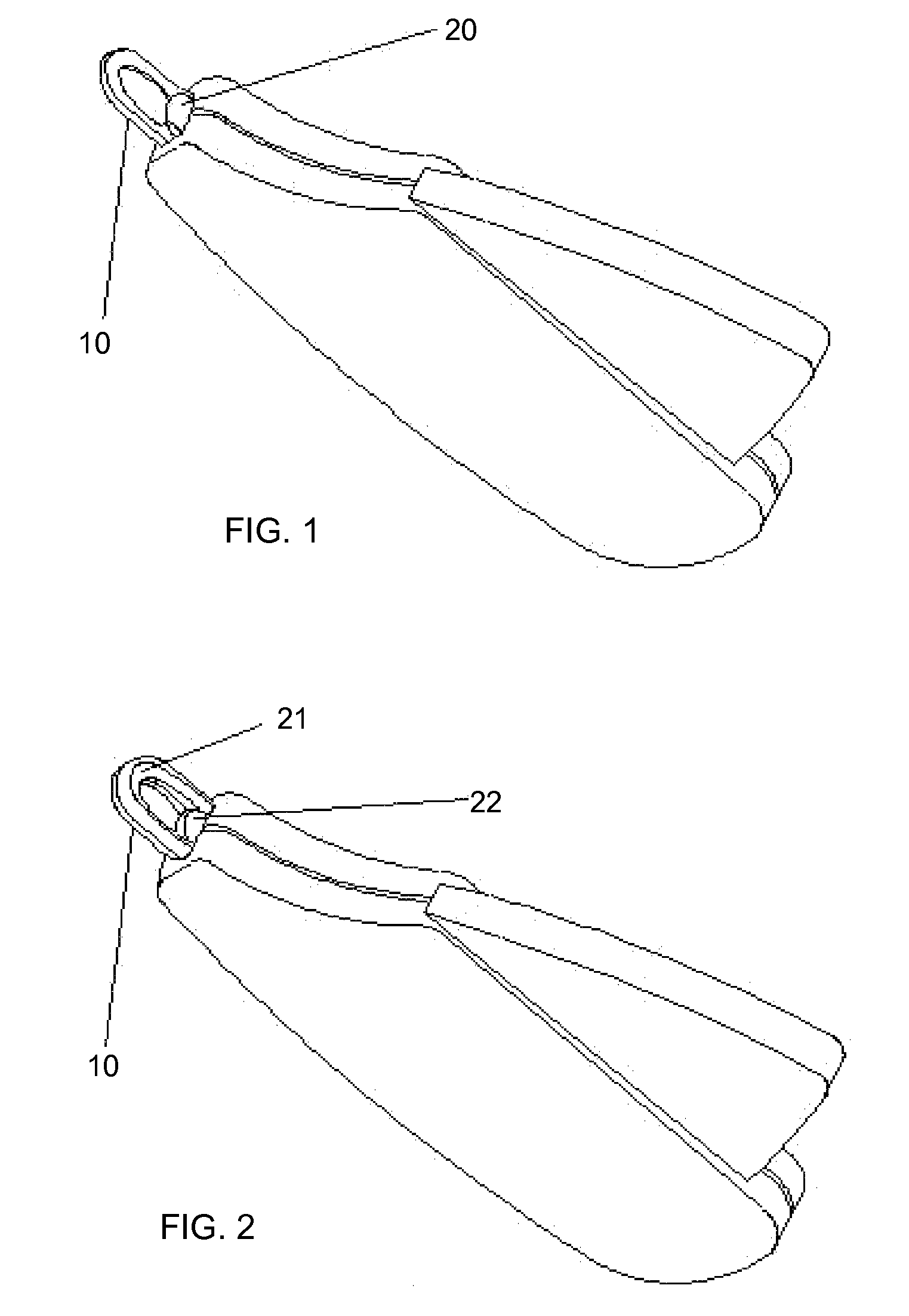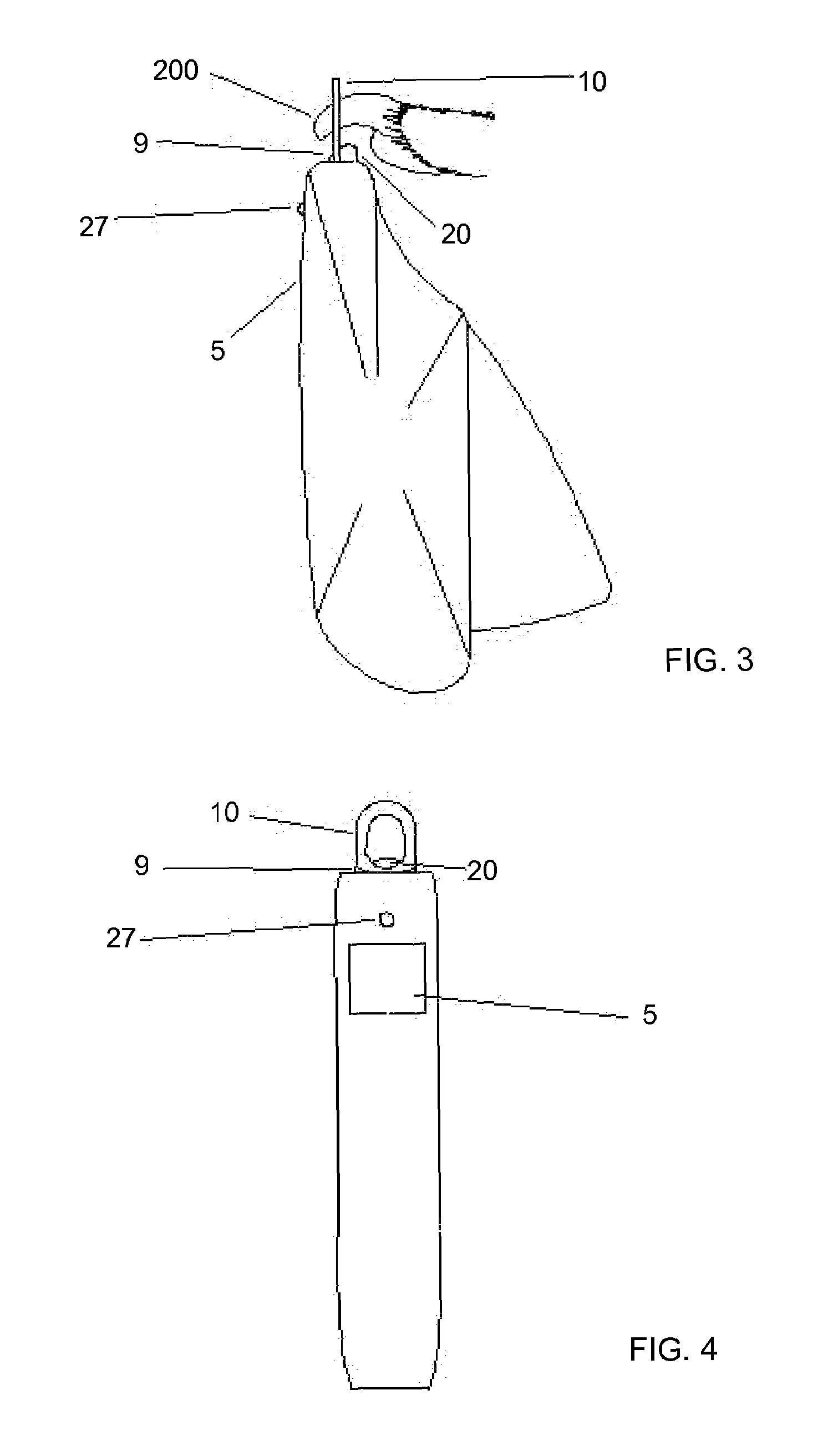Nail and claw quick detection apparatus and method
a detection apparatus and quick technology, applied in the field of claw trimming, can solve the problems of not knowing exactly how short the operator cannot know exactly how long to trim the quick, and the length of the quick is not always constant, so as to achieve convenient, safe and quick positioning.
- Summary
- Abstract
- Description
- Claims
- Application Information
AI Technical Summary
Benefits of technology
Problems solved by technology
Method used
Image
Examples
Embodiment Construction
Element List
[0032](1) scanhead sensor[0033](2) control circuit[0034](3) visual alert[0035](4) audible alert[0036](5) display window[0037](6) power supply or source[0038](7) status lights[0039](9) claw-receptacle cutting guide[0040](10) blade[0041](11) spring[0042](20) thermal detector[0043](21) light source[0044](22) photodiode[0045](24) handle[0046](25) battery[0047](26) microprocessor[0048](27) LED[0049](28) display screen[0050](32) laser[0051](31) pick up device (photo-element)[0052](101) extended tip[0053](102) spring[0054](103) scan-head marking pen[0055](104) sleeve-like housing[0056](105) solenoid device[0057](107) microprocessor controller[0058](108) threaded end cap[0059](109) cable[0060](110) alligator clip[0061](111) latching device[0062](200) animal's claw[0063](201) excess claw[0064](210) quick[0065](300) reflected wave
[0066]The invention and the various features and advantageous details thereof are explained more fully with reference to the nonlimiting embodiments that...
PUM
 Login to View More
Login to View More Abstract
Description
Claims
Application Information
 Login to View More
Login to View More - R&D
- Intellectual Property
- Life Sciences
- Materials
- Tech Scout
- Unparalleled Data Quality
- Higher Quality Content
- 60% Fewer Hallucinations
Browse by: Latest US Patents, China's latest patents, Technical Efficacy Thesaurus, Application Domain, Technology Topic, Popular Technical Reports.
© 2025 PatSnap. All rights reserved.Legal|Privacy policy|Modern Slavery Act Transparency Statement|Sitemap|About US| Contact US: help@patsnap.com



